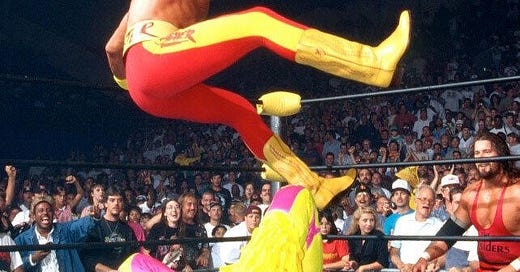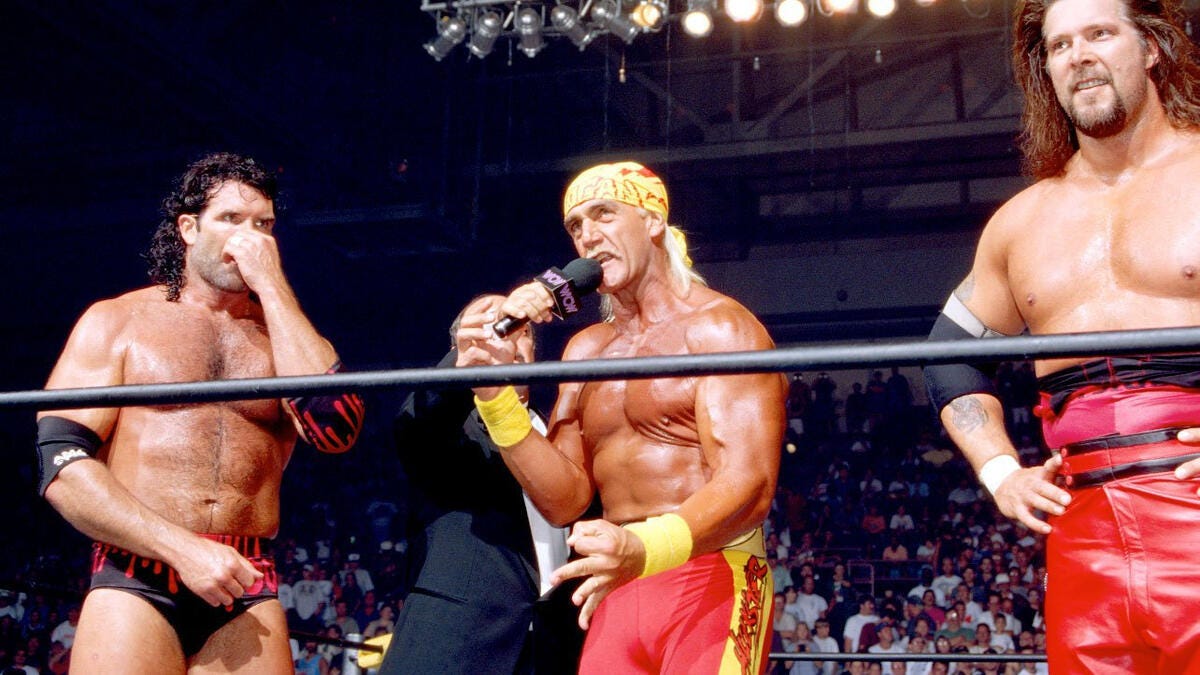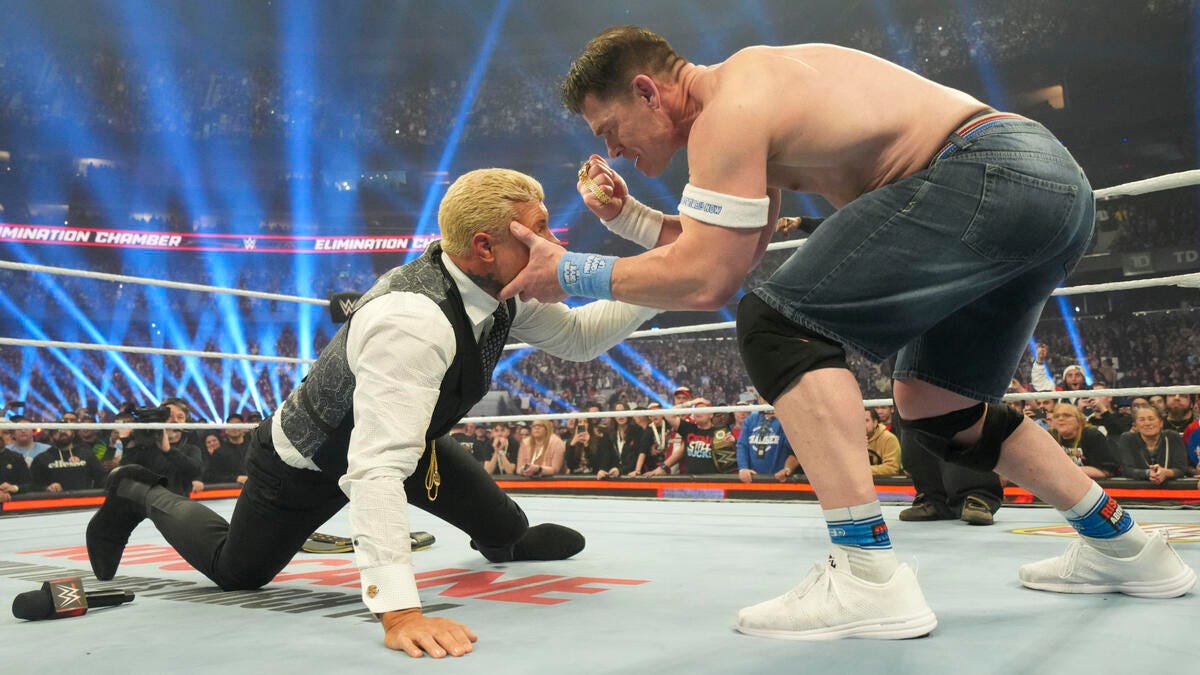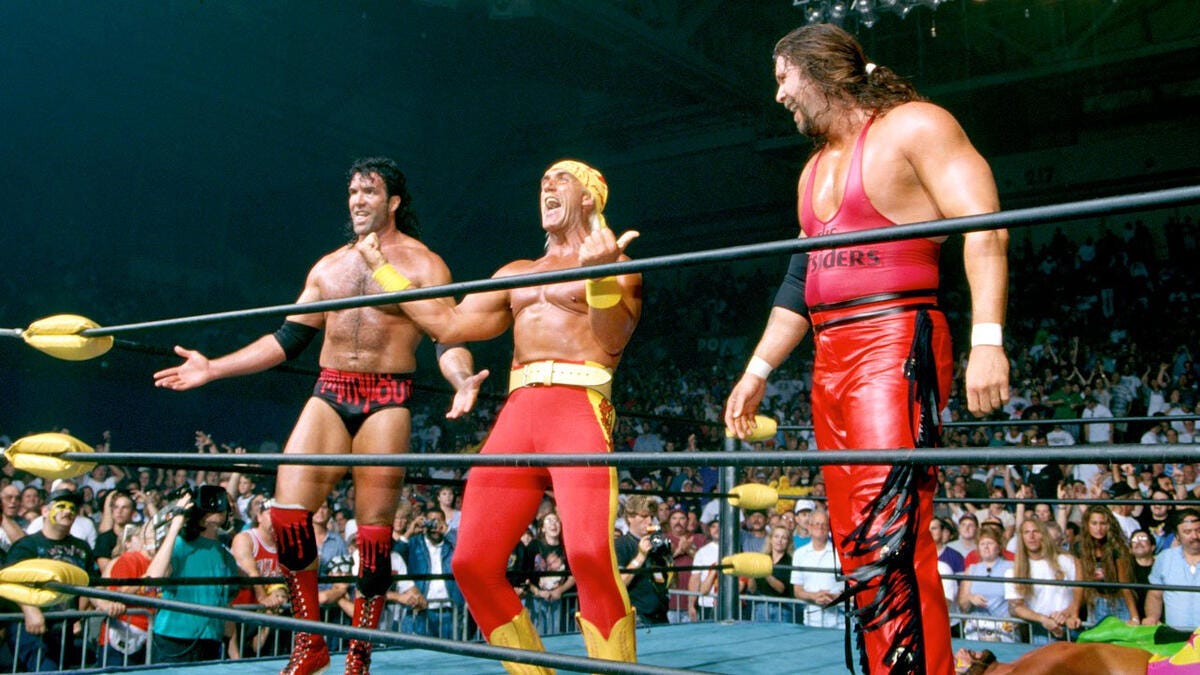Heel turns for Cena and Hogan are worlds apart
Follow Undisputed on Instagram & Facebook
Extra Mustard is a weekly column looking at the highs and lows–and everything in between–in combat sports and beyond.
No turn can compare with Hogan’s–and here’s why
When it comes to heel turns in professional wrestling, there is Hulk Hogan–then everyone else.
John Cena shocked the wrestling world this past Saturday night at Elimination Chamber, aligning himself with The Rock and turning heel when he attacked Cody Rhodes. The heel turn adds a whole new layer to Cena’s character, bringing an altogether different fire to the main event of this year’s WrestleMania.
Instead of a babyface vs. babyface match, we’ll watch Rhodes attempt to overcome the odds against Cena, who was willing to sell his soul to The Rock in pursuit of a record-breaking world title. That adds incredible sizzle to WrestleMania, finally delivering on a heel turn from Cena that people have wanted to see for close to a decade.
And it is the greatest heel turn since Hogan hit a leg drop on Randy Savage in the summer of ’96, a move that resonated from Daytona Beach, Florida to obscure parts of the world. Yes, Cena becoming a heel is massive. But it is not on the level of Hogan’s titanic, industry-defining turn.
A couple of summers ago, I was discussing the lasting impact of Hogan’s turn–and formation of the NWO–with Paul Wight. Though he is known as The Big Show after his run in WWE, he was The Giant in WCW–and his history directly intertwines with the NWO.
“The NWO changed the business,” said Wight, who was WCW champ when Hogan turned heel at Bash at the Beach. “They made it possible for heels to be cool.”
Cena’s turn was an exceptional moment, but it is not bound to change a long-standing tenet of professional wrestling. Plus, Hogan had the benefit of working beside Scott Hall and Kevin Nash, two world-class masters of the craft. They were the hottest acts in wrestling, and just made their own shocking arrivals in WCW after years of defining the product in WWE. It stands as the most cutting-edge era of pro wrestling, and there is no comparison to what happened on Saturday night.
The move to make Cena a heel is centered around a storyline based on control, similar to the dynamic between Vince McMahon and “Stone Cold” Steve Austin–or, for that matter, Triple H and Seth Rollins. The Rock wanted control, Rhodes wouldn’t give it to him, but Cena acquiesced. It is nothing we haven’t seen before, except with the unique twist of seeing Cena become a villain.
Also, a word on Travis Scott. He felt out of place the moment he walked out next to The Rock, carrying his own replica championship belt. Knowing that Cena’s turn would be huge, why possibly taint in any way whatsoever with someone who has practically no background in WWE? Unsurprisingly, multiple contacts have confirmed it was pushed for and made happen by Johnson. Every time I want to believe Dwayne Johnson has some incredible plan to move WWE forward, he makes a head-scratching move like this.
This is a problem I’ve constantly had with pro wrestling over the years–there is this unrelenting desire to be accepted by the mainstream. But the Cena turn is big enough in itself to generate all sorts of media coverage, especially in the age of social media–which, in some ways, made this feel even bigger than the Hogan turn (even though it wasn’t). Including Travis Scott was more than a misstep, it was a significant blunder.
Cena was nowhere to be seen last night on Raw, but he actually shares company with Hogan in that regard. Following Bash at the Beach in ’96, Hogan was not part of the following night’s Nitro. Hogan appeared the next week, meaning he’ll still be a week ahead of Cena, who isn’t scheduled to appear on Raw until March 17 (fortunately, he’s also booked for March 24 and March 31).
Cena’s turn is monstrous, just not industry-defining. Hogan’s turn forever changed pro wrestling. Though the red-and-yellow never fit in WCW, Hogan became a WCW icon–even crossing over into mainstream sports and entertainment in matches that included Dennis Rodman, Karl Malone and Jay Leno–in his new black-and-white incarnation. The anti-hero became the hero. There was the entire WWE-WCW saga playing out in real-time live on Monday nights. And nearly 30 years later, NWO merchandise still sells, and that era is firmly embedded into the mind of every wrestling fan.
WWE works hard to gain mainstream pop culture attention, but it happened organically with the birth of the NWO. Hogan took an outrageous risk in ’96, one that is not anywhere close to what Cena is doing. Cena is set to retire at the end of the year, providing expiration date to his heel turn–and a clear window to have a babyface turn before walking away.
So yes, Cena’s turn is the biggest since Hogan made his way to the dark side. But no, the two turns–and, as we’ll soon see, their lasting impacts–are worlds apart.








